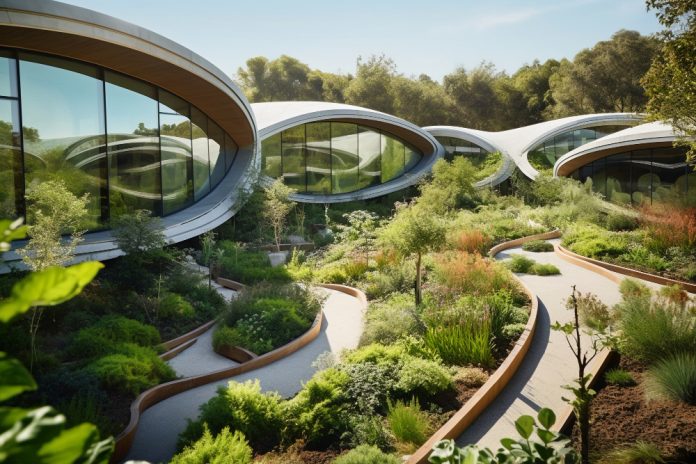Imagine living in a city where the air is cleaner because buildings are covered in lush green forests or working in an office that produces its own energy and generates zero waste. Around the world, visionary architects are transforming these ideas into reality through sustainable designs that are not only functional but also beautiful and innovative. These award-winning projects blend cutting-edge technology with nature, showing us that the future of architecture is not just about constructing buildings—it’s about creating spaces that enhance both our environment and our well-being.
Kenyatta University Students’ Library, Nairobi, is one of the largest libraries in Africa and is designed with sustainability in mind. The building’s large windows maximize natural light, reducing the need for artificial lighting. It also features rainwater harvesting systems, energy-efficient lighting, and cross-ventilation strategies to ensure a comfortable environment while minimizing energy consumption.
Read also: How Purple Tower is leading the charge in sustainable building practices in Nairobi
The Green Building, Johannesburg, South Africa, known as South Africa’s first green building, this office complex was built with sustainability at its core. The design includes solar panels, rainwater harvesting, and a rooftop garden that helps insulate the building and reduce heat absorption. The Green Building was constructed using recycled materials and continues to set a benchmark for eco-friendly commercial spaces in the region.
Take Milan’s Bosco Verticale, for instance. This “vertical forest” is more than just an impressive set of residential towers; it’s a blueprint for urban living that embraces nature instead of shutting it out. Covered with over 20,000 trees and plants, the building filters air, absorbs CO2, and provides shade—all while housing hundreds of people. Not only does this green facade make the city’s skyline more attractive, but it also brings nature back to a dense urban environment, offering residents a healthier, more vibrant space to call home.
In Amsterdam, The Edge has set a new standard for what an office can be. Touted as the most sustainable office building in the world, The Edge is more than just a workspace—it’s a smart, self-sufficient ecosystem. The building is powered largely by solar energy, uses rainwater to meet its water needs, and relies on smart systems that adjust lighting, heating, and cooling based on real-time usage data. It’s an example of how modern technology can make our everyday environments more efficient and comfortable, while dramatically reducing our environmental impact.
Then there’s the Bullitt Center in Seattle, which has earned a reputation as the greenest commercial building globally. This structure generates its own power using solar panels, collects rainwater for all its water needs, and features composting toilets. The Bullitt Center’s creators took sustainability to heart, designing it to last 250 years—far longer than the typical lifespan of most buildings. Here, the commitment to being green is about thinking long-term, considering not just today’s needs but also those of future generations.
The virtual tower of Bullitt Center: https://bullittcenter.org/2020/06/30/virtual-tour-of-the-bullitt-center/
One project that merges function with fun is CopenHill in Copenhagen. On the surface, it’s a waste-to-energy plant—an industrial facility that turns trash into electricity. But what makes CopenHill truly stand out is its creative use of space: the building doubles as a recreational hub, complete with a ski slope, hiking trails, and even a climbing wall. This clever blend of industry and leisure illustrates that even highly functional spaces can be designed in a way that enhances community life.

In Sydney, One Central Park has set the bar for integrating nature into high-rise living. With its vertical gardens and smart light-reflecting system, the building not only reduces its energy consumption but also turns an urban area into a green oasis. The design goes beyond aesthetics; it helps to naturally cool the building, reducing the need for artificial air conditioning, while providing a refreshing splash of green in the middle of the city.
These projects, from lush vertical forests to self-sustaining offices, show that architecture has the power to shape not just the way we live but also the way we think about our relationship with the planet. They are examples of how creativity, technology, and respect for the environment can come together to create spaces that are both beautiful and sustainable. The future of architecture is no longer just about concrete, steel, and glass; it’s about buildings that coexist with nature, enrich our lives, and pave the way for a healthier, more sustainable world.
As we move forward, these award-winning projects remind us that sustainability doesn’t mean sacrificing design or comfort. It means enhancing them in ways that benefit both people and the planet. This new wave of architecture proves that when we rethink the spaces we live, work, and play in, we open the door to endless possibilities for a greener and more inclusive future




